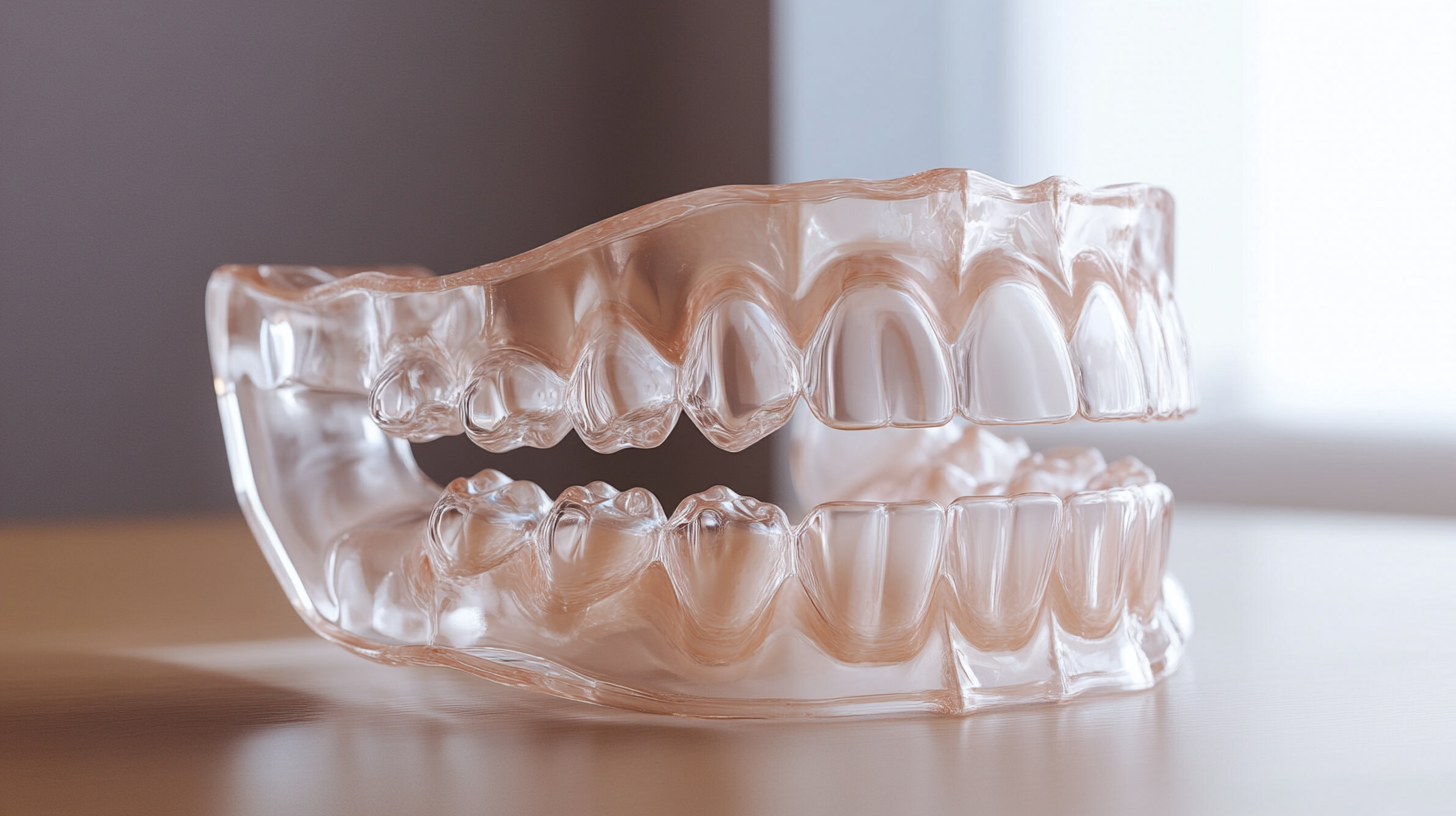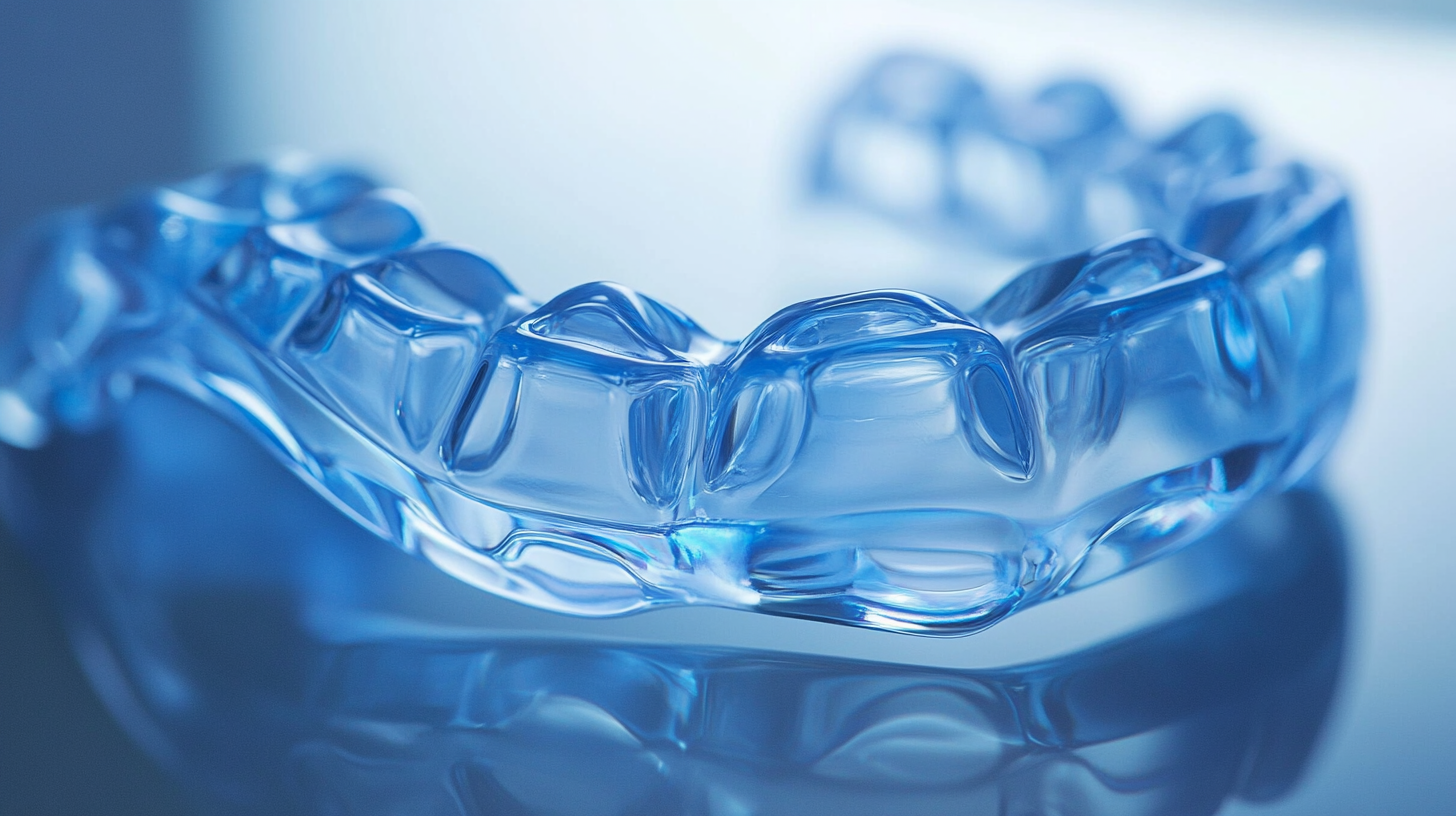Future Trends in Dental Guard Innovations for Global Buyers in 2025
As we look towards 2025, the dental guard industry is poised for significant evolution driven by technological advancements and changing consumer needs. According to a report from Grand View Research, the global dental guard market is expected to reach USD 1.4 billion by 2025, expanding at a CAGR of 5.4% from 2020 to 2025. This growth is attributed to increasing awareness of oral health and the rising prevalence of bruxism, which affects approximately 8% to 31% of adults worldwide. With the ongoing development of personalized oral care solutions, dental guards are becoming more efficient and tailored to individual requirements.
In addition to the traditional functions of dental guards for teeth protection during sports and prevention of teeth grinding, innovations such as smart dental guards equipped with sensors are emerging. These advanced devices can monitor pressure and jaw movement, offering real-time data that can be invaluable for both patients and dental professionals. The advent of 3D printing technology is also revolutionizing how dental guards are manufactured, enabling quicker production times and enhanced customization. As global buyers prepare for 2025, understanding these trends and innovations will be crucial in making informed decisions in the dental guard market.

Emerging Materials: Innovations in Dental Guard Fabrication for Enhanced Comfort and Durability
As we look toward 2025, the dental guard industry is poised for significant advancements driven by emerging materials and innovative fabrication techniques. With an increasing awareness of the importance of oral health, projected to see a market growth rate of 7% annually, advancements in dental guard technology will be crucial for meeting consumer demands for comfort and durability. Recent studies show that consumers prioritize comfort in dental guards, with nearly 68% of users claiming that discomfort influences their willingness to use these vital oral appliances. To address this concern, manufacturers are exploring new materials such as thermoplastic elastomers (TPE) and medical-grade silicone, which offer an enhanced softness while maintaining structural integrity. Data from the American Dental Association highlight that the incorporation of these materials can significantly reduce the pressure points and improve overall user satisfaction. Furthermore, innovative fabrication methods like 3D printing are revolutionizing dental guard production. This technology not only allows for custom-fit appliances that accommodate individual dental profiles but also enhances the durability of the guards. Research indicates that 3D-printed dental guards exhibit an increase in lifespan of up to 30% compared to traditionally manufactured options. As global buyers seek products that merge comfort with longevity, these developments are set to reshape the landscape of dental care in the coming years.

Smart Technology Integration: The Role of Wearable Devices in Dental Guards
In 2025, the landscape of dental guards will be significantly transformed through the integration of smart technology and wearable devices. As dental health awareness grows globally, consumers will increasingly seek innovative solutions that not only protect their teeth but also enhance their overall wellness. Smart dental guards will utilize advanced sensors to monitor oral health metrics, such as grinding frequency and jaw clenching, providing valuable data directly to users and their dentists.
These wearable devices will not only offer real-time feedback but also incorporate features like mobile app connectivity, enabling users to track their habits and receive personalized recommendations. Imagine a dental guard that alerts you via your smartphone when it detects excessive grinding during sleep, empowering you to take action to mitigate stress or seek professional advice. Such integration will move dental care beyond mere physical protection, offering insights that contribute to a holistic approach to oral health.
Furthermore, manufacturers will focus on creating comfortable and durable materials infused with technologies like antimicrobial properties to ensure hygiene. As the interest in preventive care grows, consumers will demand products that seamlessly blend functionality with advanced technology. This future trend hints at a significant shift in how we perceive dental guards—not just as a protective tool, but as an essential component of our health monitoring arsenal.

Sustainable Practices: Eco-Friendly Approaches in Dental Guard Production
The demand for eco-friendly dental guards is set to rise significantly as consumers increasingly prioritize sustainability. According to recent trends, 89% of consumers are now opting for sustainable products, driven by growing awareness of climate change and its implications. This shift in consumer behavior is influencing manufacturers to adopt sustainable practices in their production processes.
Innovations in dental guard materials are leading the way towards sustainable solutions. Biodegradable and recyclable materials are becoming more prominent, with market research suggesting that the eco-friendly dental guards segment could grow by over 30% by 2025. These products not only reduce environmental impact but also cater to health-conscious consumers who are concerned about the materials they put in their mouths.
Moreover, the integration of sustainable practices into dental guard production is not limited to materials alone. Companies are adopting greener manufacturing techniques, which significantly lower carbon footprints and energy consumption. The global market for sustainable dental products is expected to reach a value of several billion dollars by 2025, reflecting a robust trend towards sustainability in dental care.
As global buyers look towards future innovations in dental guards, sustainable practices will be at the forefront, aligning with the larger movement towards responsible consumption. This paradigm shift signals a new era in dental health products, providing both consumers and manufacturers with the opportunity to support eco-friendly initiatives while meeting the growing demand for sustainable solutions.

Customization Trends: Personalized Dental Guards for Unique User Needs
As we look ahead to 2025, the field of dental guard innovations is poised for a significant transformation, particularly in the area of customization. Personalized dental guards are becoming more than just a protective measure against teeth grinding or sports injuries; they are evolving to meet the unique needs of individual users. Advances in technology, such as 3D printing and digital scanning, are making it easier to create tailored dental guards that fit the contours of each user's mouth perfectly, enhancing both comfort and effectiveness.
The trend towards customization is driven by the growing awareness of the importance of oral health and the diversity of user needs. Different individuals have varying levels of bruxism severity, dental structures, and lifestyle requirements, necessitating unique solutions. By leveraging patient data and preferences, dental professionals can design personalized guards that provide optimal protection while accommodating specific conditions, such as TMJ disorders or sensitivity issues. This level of personalization not only improves user satisfaction but also leads to better compliance, as patients are more likely to wear a guard that feels tailor-made for them.
Moreover, the future of personalized dental guards will incorporate smart technology. Through the integration of sensors and connectivity features, these devices could monitor grinding patterns and offer real-time feedback, helping users manage their oral health proactively. As the market for dental health products continues to expand, the emphasis on customized solutions will likely become a dominant trend, reshaping the way global buyers perceive and invest in dental guards in the coming years.
Market Dynamics: Influences of Global Demand on Dental Guard Innovations in 2025
The dental guard market is poised for significant transformation by 2025, largely driven by evolving global demand and advancements in technology. According to a recent industry report by Market Research Future, the global dental guard market is projected to reach approximately $1.2 billion by 2025, reflecting a compound annual growth rate (CAGR) of around 6.5%. This growth is primarily influenced by increasing awareness about oral health and the rising prevalence of dental issues related to sleep disorders, such as bruxism.
One of the key drivers behind dental guard innovations is the growing customization trend, propelled by advancements in 3D printing and digital impressions. These technologies enable manufacturers to create highly personalized products that cater to individual dental profiles, enhancing comfort and efficacy. A report from Grand View Research highlights that the demand for custom-fit dental guards is expected to contribute significantly to market expansion, with a predicted increase in adoption rates particularly among younger consumers who value both functionality and aesthetics.
Moreover, the rising trend of preventive dental care is influencing the design and materials used in dental guards. Increased consumer preferences for non-toxic, durable, and eco-friendly materials are prompting manufacturers to rethink their production processes. As noted by Transparency Market Research, the market for silicone-based dental guards is projected to witness substantial growth due to their superior comfort and adaptability. This trend reflects a broader shift towards health-conscious products, driven by consumer demands for safety and sustainability in dental care solutions.
